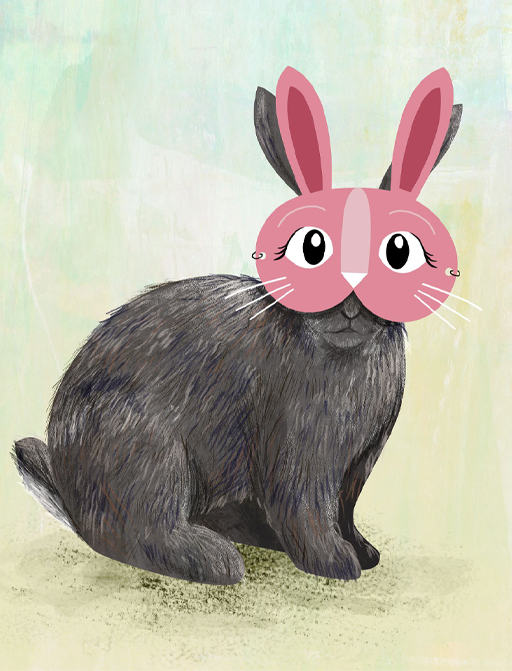1 Language, imagery and the animal turn
The animal turn examines why the social sciences have historically largely ignored harms against nonhuman animals. Anthropologist Barbara Noske provides part of the answer: ‘modern animal industries tend to be regarded as technically inevitable and politically neutral, since it is only relations between humans which are considered political’ (1989, p. 22).
If human-nonhuman animal relations are considered merely ‘technical’ (such as techniques for maximising ‘livestock’ growth and therefore profitability), their social and political dimensions are obscured. This is central to understanding the revolutionary impact of the animal turn: it focuses attention on a hitherto overlooked but fundamental facet of society. Another important aspect of the historical dearth of social science attention to nonhuman animals is that the social sciences have tended to represent humans as much more important than other animals (Peggs, 2012), and this has reflected the extent to which humanocentric beliefs are embedded in modern societies more generally.
Activity 1
In the course so far, you may have noticed the use of the terms ‘other animals’ or ‘nonhuman animals’ rather than simply ‘animals’. Why do you think this might be?
Discussion
In modern societies, it is usual to think about ‘humans’ and ‘animals’ as being separate categories. In consequence, it can be easy to forget that humans are also animals, of the species homo sapiens (Latin for ‘knowing man’). Using phrases like ‘other animals’, ‘nonhuman animals’ or ‘animals other than humans’ is a reminder that humans are also animals. These phrases interrupt the familiar linguistic separation of humans from animals and may seem jarring at first. This is deliberate: jarring language helps to create pauses to consider what is otherwise taken for granted (Dunayer, 2002). Being reminded of humans’ animality, reasserts common ground across species, including the shared capacity to be harmed and victimised. You might also note the quotation marks around ‘livestock’. This is another jarring technique, destabilising the linguistic reduction of other animals to objects for human use. Likewise with other reductive, objectifying terms such as ‘beef ’ or ‘veal’. The use of language and imagery is an important element of Foucault’s social theory, which you will come to later in the course.
The animal turn forces criminologists to think deeply about prior inattention to harms experienced by other animals. This process of critical self-reflection makes studying criminology exciting and challenging. Criminology is dynamic and constantly evolving to help expand awareness of harms, to aid understanding of how and why they occur, and ultimately, to consider ways to reduce or eliminate them. These examples also highlight that understanding harm is profoundly shaped by language. Language does not simply reflect what is known, it actively shapes knowledge. The story extends beyond language: the visual representation of nonhuman animals in the media also profoundly effects individuals’ understanding of them.
Activity 2
Look at Figure 1. What ideas do you think the artist was trying to convey in this image? If you find this difficult, think about what masks are used for generally, that is, to hide the face underneath.
Discussion
In Figure 1 the rabbit’s face is concealed beneath a ‘cute’ anthropomorphic-style mask. Anthropomorphic images give human-like features to nonhuman animals. Here, the rabbit mask has forward-facing human-like eyes, whereas real rabbits’ eyes are positioned on the sides of their heads. Cute human-like images of other animals are commonplace, especially in children’s films, television programmes and picture books. However, the anthropomorphic masking of a rabbit’s ‘real’ face in Figure 1 is jarring, with the same effect as a destabilising use of written language. This illustration is a critique of how cute images of rabbits are so prevalent that they obscure the real rabbits that they supposedly represent. It therefore comments on how some images can shape knowledge about nonhuman animals and conceal more than they actually reveal. Decoding the meaning of images takes practice and may be contested. In this case, the intended meaning of the image is known, because the artist Hayley Wells was commissioned to create it for my jointly written book, Our Children and Other Animals (Cole and Stewart, 2014).
So, if language and images can profoundly affect knowledge, we, as criminologists, need to take them seriously, even images as apparently trivial as a cute bunny mask. In this example the ‘cute bunny’ itself trivialises real rabbits, making recognition of them as victims of harm more difficult. Trivialisation is important in the context of the harms that humans perpetrate against other animals. It is to some of these harms that the next section turns.
So to conclude Section 1:
- The recent animal turn expands the potential for criminology to attend to harms perpetrated by humans against other animals.
- The animal turn is a counterpoint to dominant humanocentric beliefs, which minimise the perceived importance of the victimisation of nonhuman animals.
- Humanocentric beliefs can be communicated, and contested, by the language and imagery used to refer to and represent other animals.

